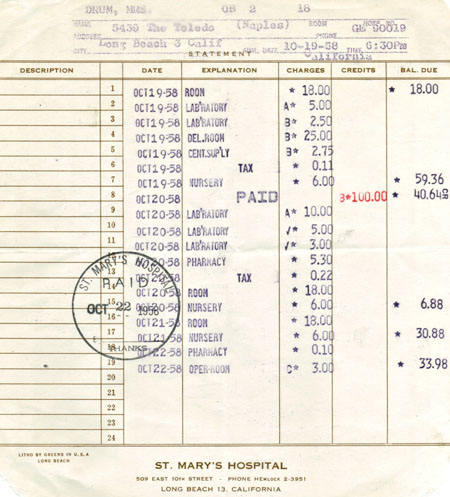Since it’s my birthday, it’s an excuse to provide a one-document explanation for why healthcare costs have skyrocketed so much in the past 50 years. Here it is:

That’s the bill for my delivery. I cost $133.98. Adjusted for ordinary CPI inflation, that comes to $1,000 in current dollars. Today, an uncomplicated birth (which mine was — I was born at 8:02 pm, ninety minutes after my mother was admitted to the hospital) will run you upwards of $10,000. Add even a little bit of complication and it can easily rise to $20-30,000.
Why? Because doctors were paid fairly ordinary middle-class salaries in the 50s and there was essentially no technology involved in any of this. My mother says that her room in the hospital basically had a bed and a telephone. In the delivery room there were no epidurals, no beeping machines, no phalanx of specialists. Just piped in music, which played “Yellow Rose of Texas” while I was popping out.
We can go back to that any time we like. But I doubt there are any takers.















